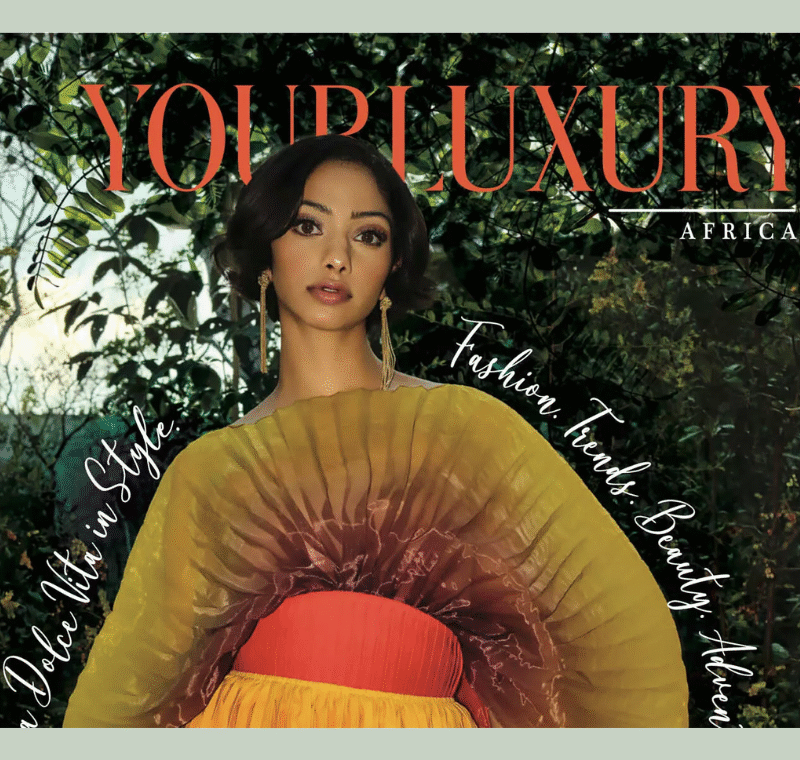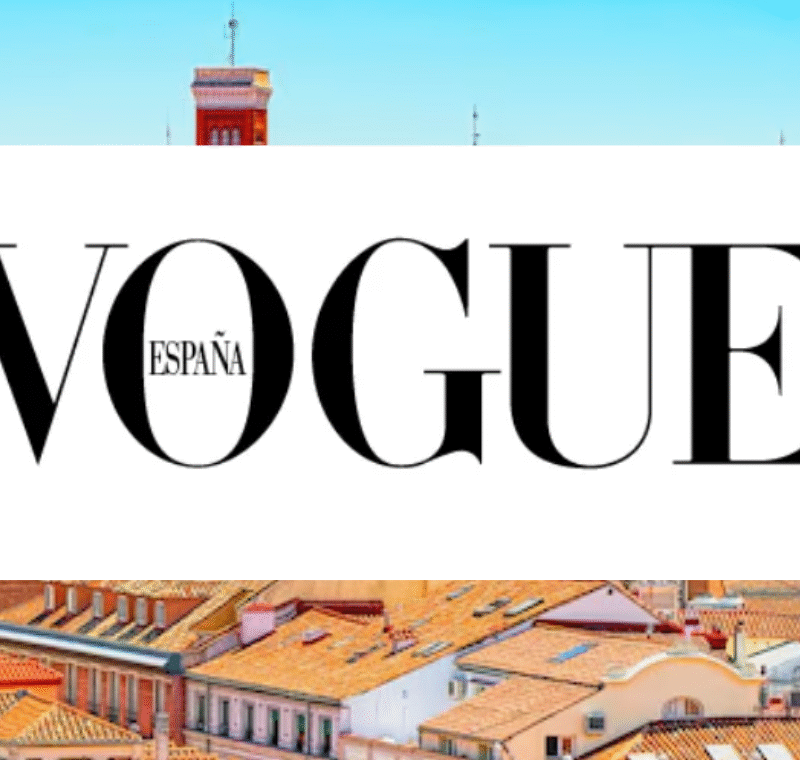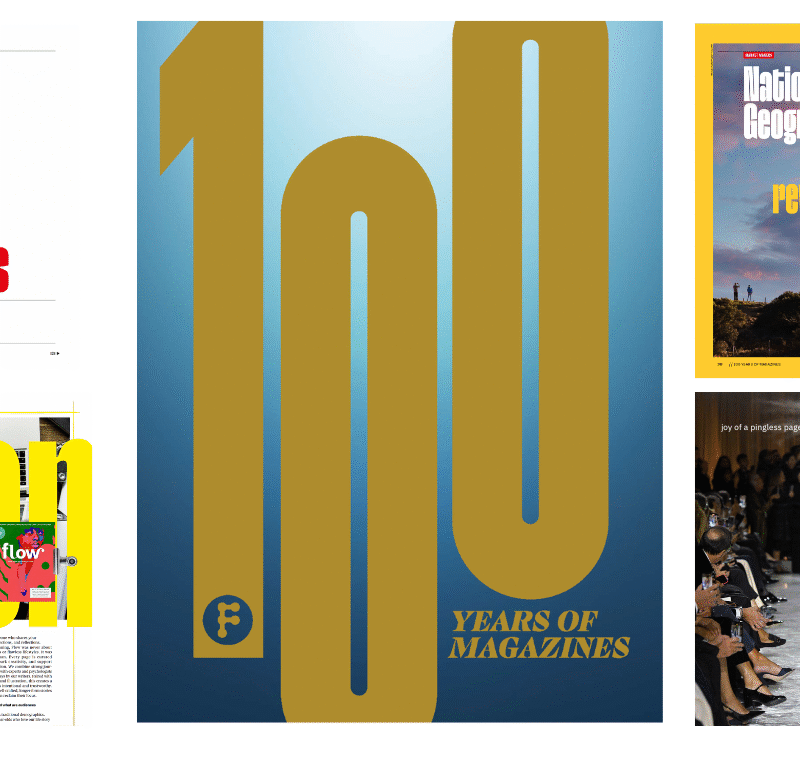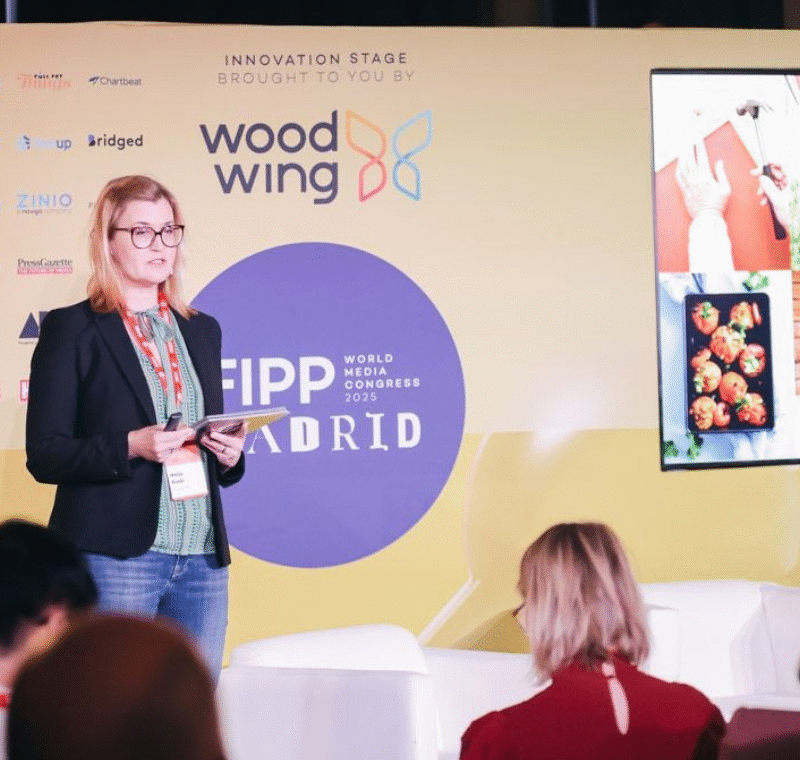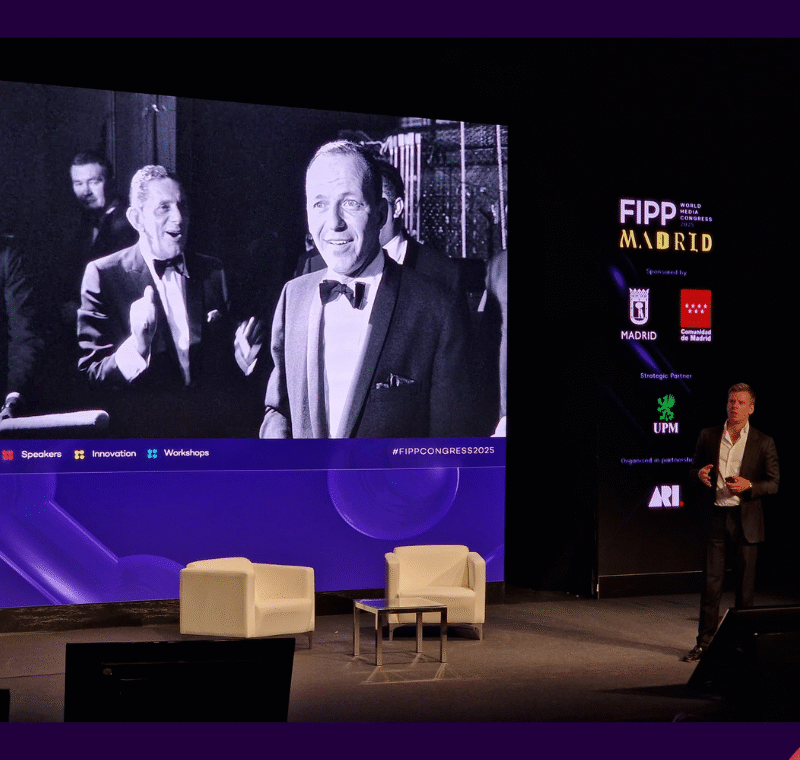British Vogue, New Scientist and LinkedIn share top social media strategies that work
Whether it’s celebrity cooking classes, frolicking dolphins or red-carpet reports, social media platforms can be powerful tools for publishers looking to boost audience engagement.
At the recent PPA Festival in London, Lisa Batty, Global Planning Director at TikTok, sat down with four experts in the field to discuss the importance of social media to publishers. Joining her were Georgia Shepheard, Senior Manager, Social Media at British Vogue; Isabel Baldwin, Social Media Manager at New Scientist; Obomate Briggs, Video Producer at New Scientist; and Mimi Turner, Head of Marketplace Innovation at LinkedIn.
From hooking audiences with a strangely stowed onion, to treating LinkedIn like a medieval village, the panel shared their social media success stories and revealed how publishers can make the most of online platforms.

Madrid, Spain, 21-23 October 2025
An unforgettable gathering that will shape the future of media.
Star power and the seven-second rule
Since Georgia Shepheard started developing and executing British Vogue’s social media strategy across print, digital and events in 2023, the brand’s TikTok following has increased by 175%, while 1.17 billion Instagram impressions were made in the past 12 months under her leadership.
The legacy brand, which is particularly synonymous with social media series like Life In Looks, In the Bag and 73 questions, rolls out its campaigns in very different ways depending on the platforms it is using.
“On Instagram, we focus on the perfectly optimised 90-second edit,” Shepheard explained. “We start with a really catchy introduction, and I always say to the team: We don’t want to focus on setting the scene with beautiful shots of cocktails being made – we want the front-facing talent in that first three seconds.
“We also always encompass subtitles on Instagram, which is something that I’m really passionate about, not only from an accessibility perspective, but because 70% of Instagram users actually watch without sound. So, it’s really key that we have subtitles on these videos for the perfect user experience.”
When it comes to TikTok, Vogue does not subtitle anything, depending on the app to auto generated captions since audiences “prefer native design elements and language”. In rolling out its snackable soundbites on TikTok, British Vogue adhere to a seven-second rule.
“The way content is delivered on TikTok is via the view page and you actually only need seven seconds of content to hit that feed,” said Shepheard. “Something I really drill into the team is that while they might have shot incredible talent such as Kylie Jenner and come away from that shoot and say we didn’t get any content with her, you just need seven seconds on your phone.
“We shot Kylie back in September, and we literally had 10 seconds with her and her kids on set and it really just proved how important that is. This single clip did 40 million video views across Instagram and has outperformed our cover itself because it really gives a flavour of just Kylie and the family element.”
While British Vogue competes with other publications for access and for coverage, it also battles with the other Vogue markets in the way it covers big events like the Met Gala.
So, while Sabrina Carpenter received a lot of coverage around the world when performing at the Brit Awards, British Vogue turned to a local star Jorja Smith. “We had access to a fitting she was doing at our office, so we shot that and co-posted it with Jorja,” said Shepheard. “It did incredible numbers that the other markets I guess could not replicate.”
While Vogue is synonymous with glamorous stars, every now an atypical celebrity surprises the fashion bible. When Vogue did a In the Bag with Miriam Margoyles, a clip of her eating an onion she kept in her bag became one of the magazine’s top ten TikTok videos of all time. “It just reached a completely new audience for us,” beamed Shepheard. “I think everyone really relates to the weird authenticity of that.”
Science lovers and urinating dolphins
New Scientist magazine recently reached an impressive milestone – a million followers on Instagram. This, after the magazine had about 700,000 followers just a few years ago.
“We were posting mainly news images with simple headlines and repurposing a lot of our video content from the website,” said Isabel Baldwin. “It was kind of just fine. We weren’t getting a lot of traffic, so we knew we could do a lot better.
“We focused on Instagram because we knew there was a loyal audience on there and that followers are more likely than other social media platforms to convert to subscribers. So, there was a clear opportunity for us to do something better. And we did it. We hit one million followers and increased our subscriptions by 197% – and doubled our interactions.”
New Scientist’s success has been done to a five-point strategy. First off it was about knowing their audience. “We need to define the science crowd on social media, and don’t assume your audience isn’t out there,” added Baldwin. “They definitely are. Instagram is such a great place to find an audience for what you’re making. You just have to be reaching them in the right way.
“So, we tested and experimented with loads of different topics and formats. See what’s working. Look at the data, what’s not working, what is working, ditch what’s not working and keep doing what’s working and tweaking along the way.”
Secondly, New Scientist made sure it was tailoring its journalism for the platform. “We’re destilling our features down to sellable, interesting titbits that our audience are really engaging with.”
The magazine is also encouraging its journalist to really get involved – training them in how to use a camera and have a strong camera presence. “It’s really that human interaction that’s going to drive the audience engagement,” said Baldwin. “They’re the experts, the voice from our magazines, so bringing that onto Instagram makes sense.”
According to Obomate Briggs it only takes about three seconds for users to decide whether they will stick with a video on social media or not. “That means we have to pay key attention to structuring our content to make something the most impactful it can be and illicit the best response – whether that’s a dolphin peeing video or something about space,” she added.
“Our audience feeling something is what we focused on. For us it’s not just about facts on Instagram, it’s also about telling the story. We have 60 to 90 seconds to create a clear, well-paced story arc with the hook.
“Why is it important now? Why is it important for them? What’s the take-away? All of this helps boost retention. These people are being walked through the story as opposed to just being bombarded with facts, which you might see with a science publication.”
Posting consistently is crucial to help New Scientist stay relevant. “For us, timeliness is not just about chasing trends, because with our population you can’t necessarily do that,” said Briggs. “It’s about being present and prepared where your audience expects you to be, whether that’s a Nobel Prize announcement or a space launch or a new scientific breakthrough.
“While social media algorithms reward recency, you can’t sacrifice accuracy for speed. Fast, accurate reporting helps you build credibility with your audience and helps build brand awareness, which is essentially good in the long term for loyalty and the growth of our platforms.”
Maybe the most important aspect of New Scientist’s social media strategy is to stay true to the magazine. “Your feed should look, sound and feel just like your magazine does,” said Baldwin. “So, for us, we’re keeping our tone consistent. We’re bringing in a lot of the artwork from the magazine and we make sure we’re just as scientifically accurate as our magazine is.
“And don’t chase every single trend. It will often feel forced, and you’ll probably be late to it. Instead, look at those trending topics that align with your magazine.”
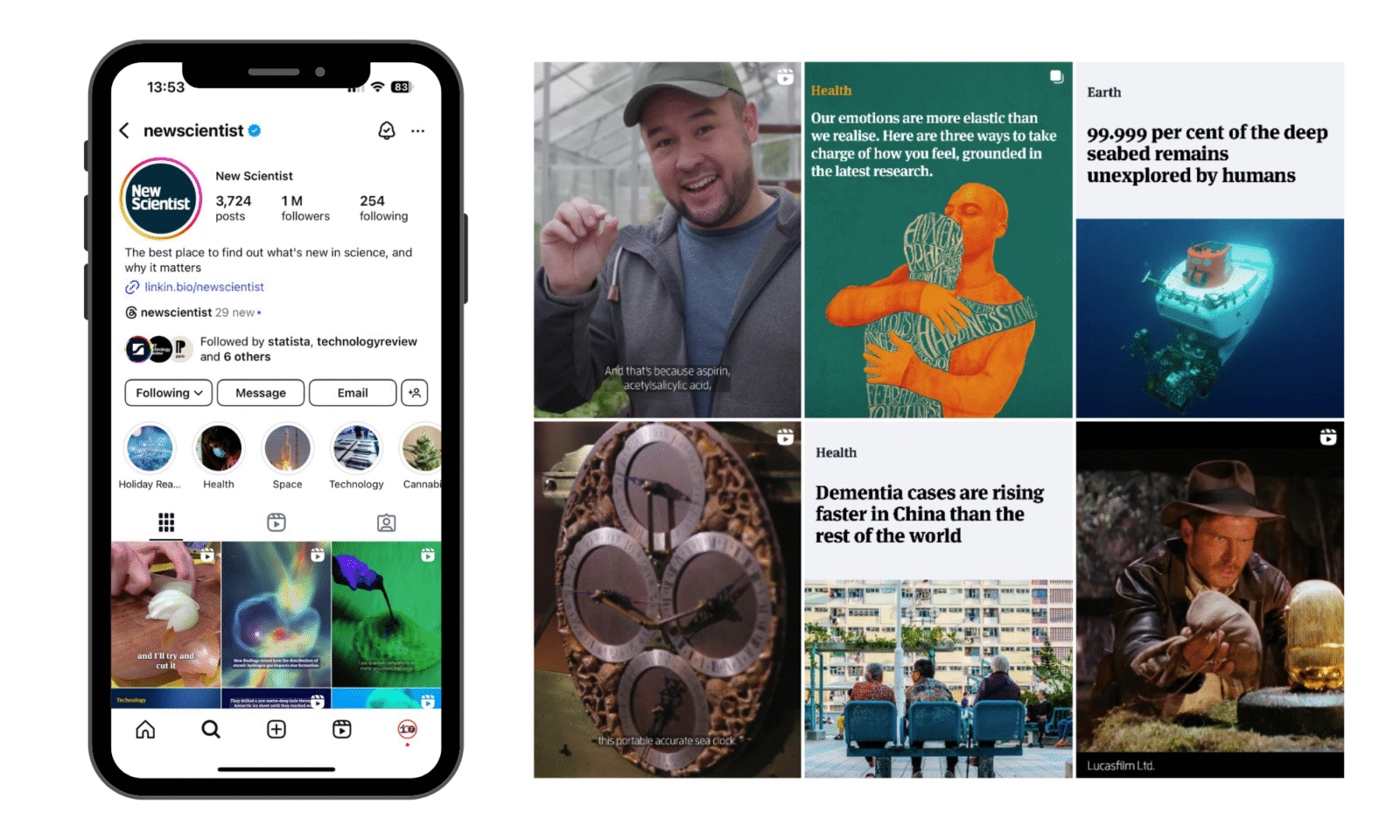
Having a loud voice in a medieval village
As the Head of Marketplace Innovation at LinkedIn, Mimi Turner is part of a sprawling, global networking hub that has 1.1 billion members. She is tasked with researching what works for B2B marketers and sellers. After four years Turner has come to a conclusion.
“Within B2B, building a brand is much more important than in B2C,” she said. “That’s kind of a revolutionary thing because everybody identifies B2C as where brands live. But if you want to be successful in B2B, I think brand building is like 1,000 times more important.
“So, I’m on a mission to actually dial up the importance of brand in B2B because most B2B businesses really struggle with answering the question to their CFO – why is brand important?
“I’d like to be able to help to answer and advance that question, because I think B2B is a huge category – it’s $19 trillion of commerce compared to the whole of B2C, which is about $6 trillion in global commerce. We’ve got this very big unexplored world which is very interesting.”
According to Turner, a CEO showing up on LinkedIn is one of the best things a brand can do.
“I think it’s a really interesting domain and CEO engagement is a very profound, easy and accessible way to define yourself as a business,” she said.
“LinkedIn is like a medieval village – it’s the town square. You are in a very public-facing environment – your investors are there, your shareholders are there, your customers are there, your employees are there, and your future employees are there. Everybody is in that kind of marketplace milling around, and having a voice there makes a difference.”
FIPP WORLD MEDIA CONGRESS
Madrid, Spain, 21-23 October 2025
Get ahead of the curve – in excellent company
TIME | The New York Times | Vogue | Arab News | WIRED | The Economist | Axel Springer | Condé Nast | Bauer Media | Mediahuis | Ringier | Hearst | A Media Operator | RocaNews | DC Thomson …and many more.
>> BOOK NOW WITH THE SUMMER SPECIAL RATE


